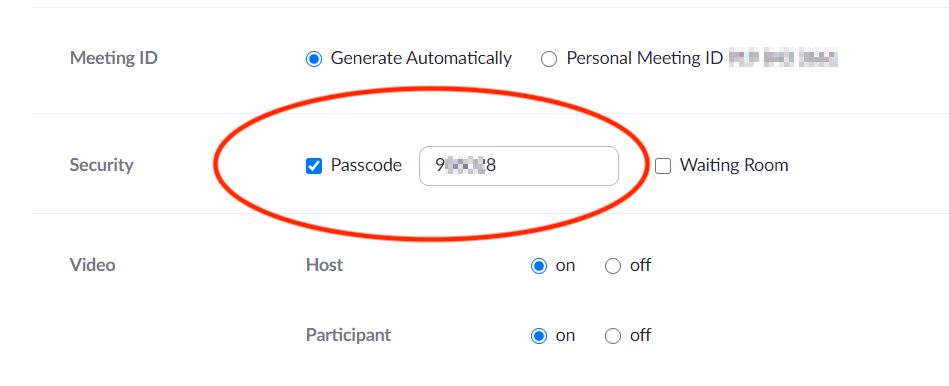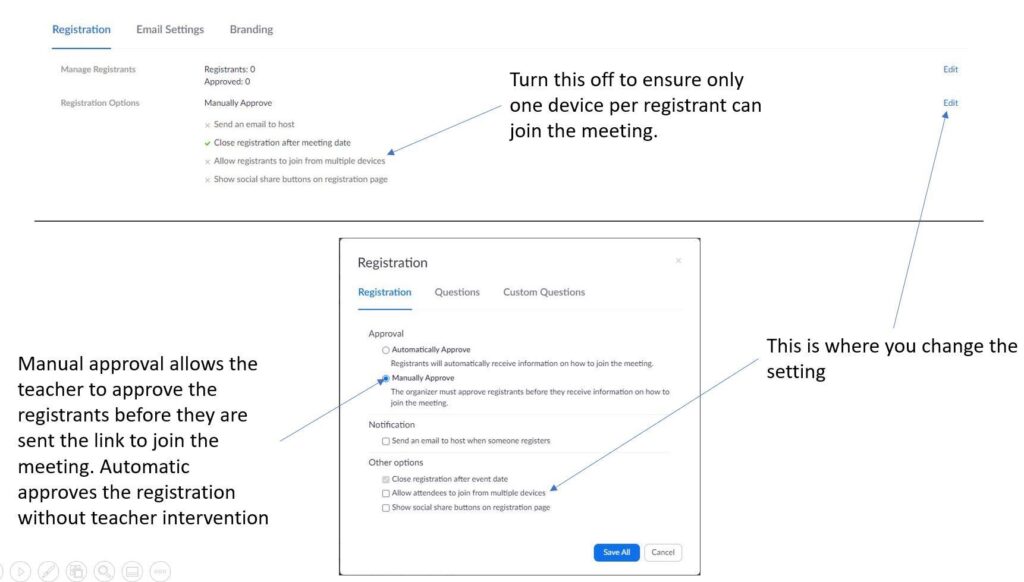
So with ieducate and IMS helping access and navigate Zoom more easily what about security and online safety when it comes to using the popular platform?
Well as the saying goes, with great power comes great responsibility, which is why Zoom wants to make sure your virtual classrooms and more importantly your students are protected just as they are in a traditional classroom setting.

One particularly unwelcome cultural phenomenon which has arisen with the increased popularity of Zoom and illustrates perfectly the need for increased security awareness is ‘Zoom bombing’. This is where uninvited attendees join a meeting or class with the sole intent to disrupt it and this can range from milder interruptions to more extreme threats including the sharing of pornographic content or sexist or racist slurs. Sadly no one is immune from this threat, which is why it is so crucial to carry out the correct precautions when using Zoom.
Did you know that simple searches on Twitter or Google can bring up multiple links to meetings which anyone can then share via Whatsapp and then use to access meetings or classes.
To help combat this, Zoom is reminding us never to share your classroom details (meeting ID and passcode) on any public forum, social media outlet or even your school’s public website. Many uninvited guests will literally trawl the internet for publicly posted meeting IDs, so if you find out that a student or someone else has posted your meeting information online, make sure you change the meeting ID before your next class.Finally, while it may be tempting to share the enthusiasm generated by a virtual classroom, teachers are advised not to post pictures of online classes on social media or anywhere online to help protect the privacy of primary and secondary school students.
So as you can see when it comes to preparing your Zoom class forewarned is forearmed and with that in mind, we’ve come up with some other helpful tips to help you feel more secure in your virtual classrooms.

10. What’s the magic word…
Don’t forget to password-protect your classroom. Simply create a password and share it with your students safely via school email so only those invited to take part can access your virtual classroom.

9. Worth waiting for…

Another great feature of a Zoom virtual classroom is the Waiting Room, this is one of the best ways to protect your Zoom virtual classroom from the aforementioned ‘Zoom bombers’ and keep your classroom secure. This feature is on by default for all education users. When enabled, you have two options for who goes to the Waiting Room before entering a class: All Participants or Guest Participants only. This feature is on by default for all education users and should be set for All Participants as best practice.
8. Cutting down the chat…
Teachers can restrict the in-class chat so students cannot privately message each other. Zoom recommends controlling chat access from the Security icon (instead of disabling chat completely in your settings) this way pupils can still interact with a teacher to ask them a maths question or to tell them all about their new dog Fluffy!

7. ID please…

It’s also a very good idea to generate a random meeting ID for your class, so it can’t be shared multiple times and don’t use your Personal Meeting ID for the meeting.
You can also ensure even more privacy and protection by requiring registration: This step will show you every email address of everyone who signed up to join your class and can help you keep track of who is attending.
6. Lock it down…
Just like teachers like to close their classroom door after the school bell goes to maintain privacy, did you know you can lock a Zoom session that’s already started so that no one else can join? Allow your pupils a few minutes (usually 10 mins) to join in and then simply click the Security icon at the bottom of your Zoom window. In the pop-up, click the button that says Lock Meeting.

5. Screen sharing is caring…

Did you know that Zoom have updated their default screen sharing settings for education users? This means that teachers now have more control over what their students are viewing and this means you can also stop them from sharing unwelcome content. Sharing privileges are now also set to “Host Only,” which means teachers by default are the only ones who can share content in class. When you would like your pupils to share their work with the group, you can allow screen sharing in the host controls.
4. Your names not down…
If for some reason, an uninvited guest manages to gain entry to your virtual classroom, the good news is you can easily remove them from the Security icon or from the Participants panel. Use your mouse to select a participant’s name in the Participants panel, and several options will appear, including “Remove.” Click to remove them from your virtual classroom, and even better news is they won’t be allowed back in.Speaking of names!
You may have seen the news stories recently about school children changing their Zoom name to ‘Reconnecting’ so they appear to be having internet problems and can avoid answering any questions from their teachers! While this made for an amusing viral story for many during lockdown it also serves to remind us about the importance of security features. So to avoid this and any other colourful names you can simply disable the ability for any Zoom participant to rename themselves at the account, group, and user level in your settings. Or if class is already in session, you can toggle this capability in-meeting under the Security icon.

3. Taking charge…

If your class is interrupted by a hapless lawyer with a kitten filter as you also may have seen in the news recently or someone more sinister you and any of your co-hosts can pause the meeting to remove and report the party crasher and prevent further disruption. To do this once again go to the Security icon and simply select “Suspend Participant Activities”. This will temporarily pause all video, audio, in-meeting chat, annotation, screen sharing, and recording, and end Breakout Rooms. When you’re ready you can then resume the class by re-enabling the individual features.
2. The art of Distraction…
There is nothing more off putting in a virtual classroom setting than background distractions. So whether it’s the family dog chasing it’s tail, dancing siblings or waving classmates, you can eliminate disruption by turning off a student’s video during class. Silence is also golden when it comes to Zoom classes so don’t forget you can also mute individual students or all of them at once. Mute Upon Entry (in your settings) is also available to keep the mayhem of arrivals to a minimum! Under the Security icon, teachers can also hide profile pictures of any participants that don’t have their video on. Only their names will be displayed and thanks to our earlier tip it won’t be ‘Reconnecting’. You can also set this option as a default in the In Meeting section of your Zoom settings.

1. We’ve got your back…

Finally don’t forget security is of the utmost importance at Zoom which is why teachers and other hosts can report users to Zoom’s Trust and Safety team, who will then review any potential misuse of the platform and take appropriate action. This setting can be found on the meeting information panel.
For more technical tips and resources on Zoom you can find more information on ieducate.ie.
If you are interested in getting Zoom Education Licences for your school (No time limit) the signup link is: https://www.ieducate.ie/signup
Applications must be made by the Principal on behalf of the school and include a Department of Education assigned Roll Number.
